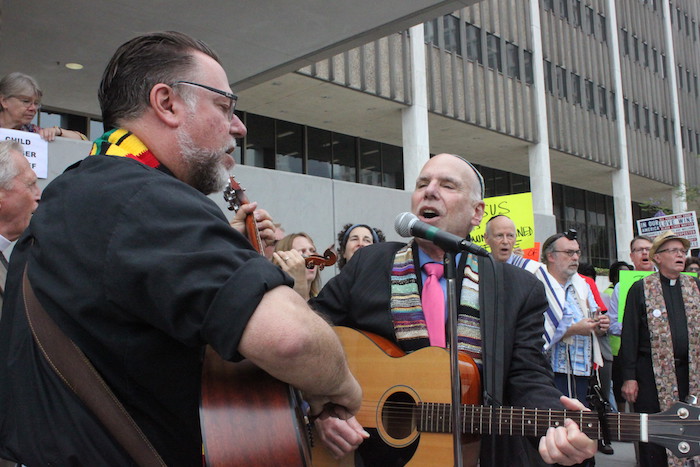When San Francisco Sheriff Mike Hennessy wanted to opt out of the U.S. Immigration and Customs Enforcement (ICE)’s Secure Communities program earlier this year, he was told he didn’t really have that option. “I wrote to the state attorney general, I wrote to ICE officials, and I was told there was no opt out, ” Hennessy said.
So Secure Communities—S-COMM for short—which requires local law enforcement to fingerprint anyone under arrest and send the prints to the Department of Homeland Security, went into effect in San Francisco in June over the objections of Hennessy and the Board of Supervisors. Now a seven-page ICE memo, titled “Setting the Record Straight,” suggests there might be an opt-out provision after all.
“ICE finally acknowledged it. We knew it was voluntary all along,” Angela Chan, staff attorney at the San Francisco¬–based Asian Law Caucus, said Wednesday during a teleconference call. “There is no way they can impose it on localities. It is a federal program, not a federal law.”
Some 30 states and 574 local jurisdictions have already signed onto S-COMM. It’s unclear how many of them knew they were not legally required to participate.
ICE just released the August 17 memo after intense pressure from immigration and civil rights activists and a Freedom of Information Act request filed earlier this year.
ICE claimed that it was issuing the memo to refute “several false claims” made by groups such as the Center for Constitutional Rights, National Day Laborers’ Organizing Network, and the Kathryn O. Greenberg Immigration Justice Clinic of the Benjamin N. Cardozo School of Law.
The process for opting out was “buried” on the second-to-last page, said Sarahi Uribe, lead organizer of the Uncover the Truth Campaign for the National Day Laborer Organizing Network.
According to the memo, if a city or county decides not to participate in the program, it must formally notify its state identification bureau and ICE in writing (email, letter or facsimile) by the scheduled “deployment date.” Upon receipt, ICE will request a meeting with federal partners, the local jurisdiction, and the state to discuss any issues and come to a resolution, which may include adjusting the jurisdiction’s activation date or removing the jurisdiction from the deployment plan.
“I did all that,” Hennessy countered. “I did not even get the courtesy of a written response.”
Hennessy clarified that he does not object to cooperation with ICE per se. San Francisco already sends the fingerprint records of felons to federal immigration authorities. S-COMM would require the sheriff to do the same even for people picked up for minor infractions, even if they turn out to be innocent.
Since the program went into effect, San Francisco has submitted thousands of fingerprint records to ICE. “About 7 percent have come back as matches, putting hundreds at the risk of deportation,” Chan said.
But even if an opt-out provision exists in theory, it’s unclear how the provision would work in practice. To date, the only jurisdiction that has successfully managed to opt out is Washington D.C., Uribe said.
But D.C. is an exceptional case since it is not part of any state. “Burying the opt-out process in a seven-page document is not enough,” she said. “It’s not enough for civil rights activists. It’s not enough for law enforcement. It’s not enough for the general public. We demand a clear and functional protocol.”
In California, the question remains whether San Francisco could opt out of S-COMM even if the state stays in. Attorney General Jerry Brown, who is running for governor, told Hennessy that he did not wish to help any jurisdiction get out of the program. However, Chan said Brown’s office had assured them that if counties found a way to opt out, his office would not stand in their way.
Even if San Francisco manages to figure out its exit strategy, it might not be the end of the story. Even without S-COMM in place, when a person is arrested and fingerprinted, that data is shared with the FBI and Department of Justice to check for outstanding warrants. George Shirakawa, on the Board of Supervisors in Santa Clara County, which has the highest proportion of foreign-born residents in California, worried that this data could land up with ICE anyway —“just without our knowledge.”
For now, Hennessy has sent another letter to ICE and Brown requesting that San Francisco be removed from participation in S-COMM.
“The question is now, how will ICE react?” Chan asked. “Will they come up with a list of excuses on why they cannot follow their own procedure?”









